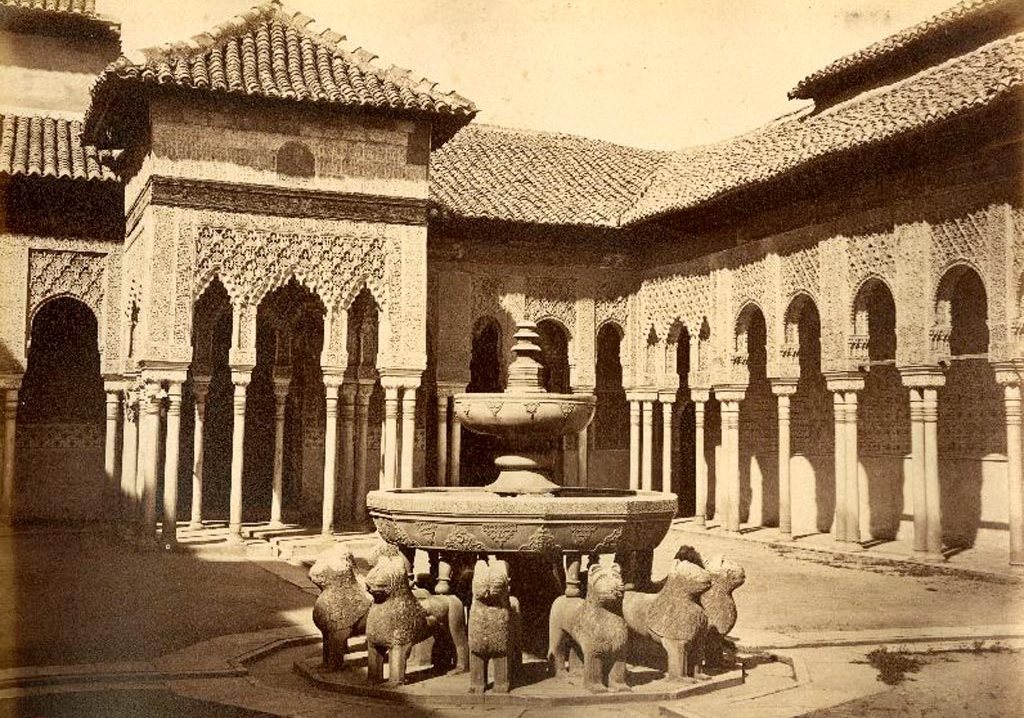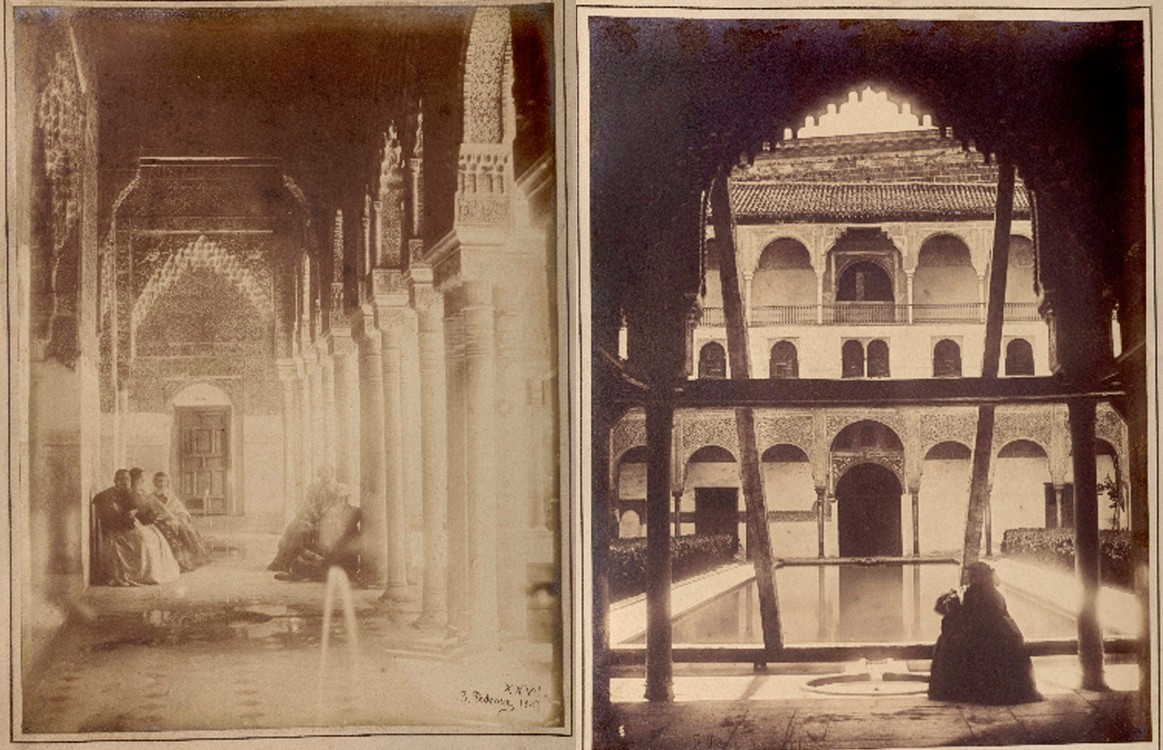The Alhambra or the endless search for Beauty
Recreating the beauty of the world has been an endless task that is captured in the study of Art History. It has required multiple analyses, carried out in widely different and varying contexts that have led to theoretical models that are able to describe it in unique cases. The search for beauty has been a constant in all cultures throughout the world. Perhaps this is because human beings have always been aware of the fact that nothing ugly survives for long, or perhaps because we have learned that beauty is not a permanent characteristic of those who possess it, or even because, being a sensation, a concept, a perception, our subconscious urges us not to let it escape, to
immortalize it in some way and not lose it, so that it can continually bring us joy.
The Alhambra appears before our eyes floating in exultant beauty. To a large extent this is derived from the geometry of its architecture and its very simple, perfectly ordered forms in magnificent harmony with cultural meanings that are part of the collective imagination.
The use of volumes such as those seen in the real or imagined three-dimensionality of the qubbas, whose basic structure is the cube juxtaposed against a wooden frame or muqarna vault, or one with glass, represent the transition between the earthly and the divine.
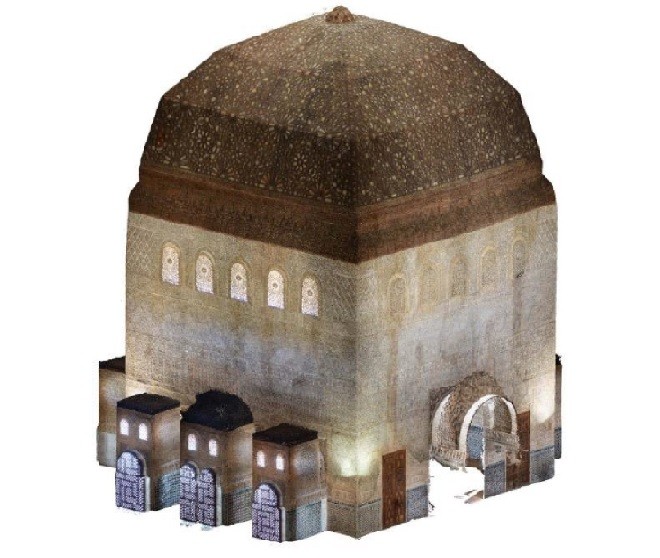
The decoration of skirting boards and vertical walls in two-dimensions has an impact on the symbolic representation. What does the eye-catching decoration of the ceramic skirting boards mean?
Their tiled mosaics are based on the reproduction of a basic, simple and asymmetrical form, called basic tesserae, which extends along the plane and finds order by applying the changing symmetry that it features. The pieces are made in glazed, almost mirror-like ceramic in an abundance of rich colours. What do they obey? What is the message that they incessantly and repeatedly ask of those around them?
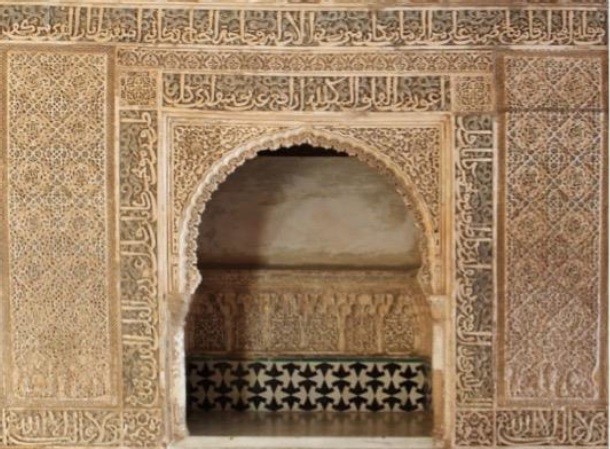
Autoría: Jesús Valenciano de Alarcón
Fuente: Pérez Gómez, R. (2019). Alhambra. Belleza abstracta. Patronato de la Alhambra y Generalife, p. 157
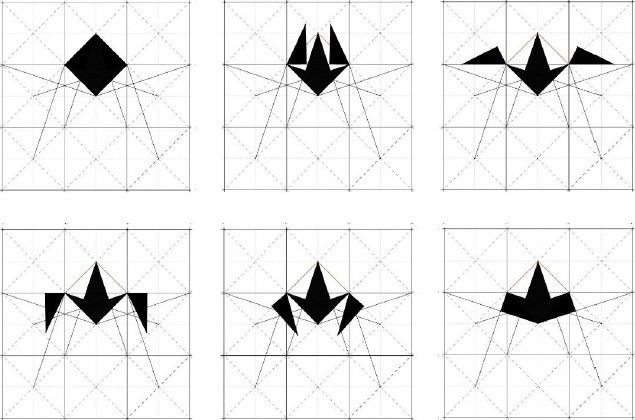
Dibujo y análisis geométrico: Pérez Gómez, R.
Fuente: Pérez Gómez, R. (2019). Alhambra. Belleza abstracta. Patronato de la Alhambra y Generalife, p. 158

Dibujo y análisis geométrico: Pérez Gómez, R.
Fuente: Pérez Gómez, R. (2019). Alhambra. Belleza abstracta. Patronato de la Alhambra y Generalife, p. 158
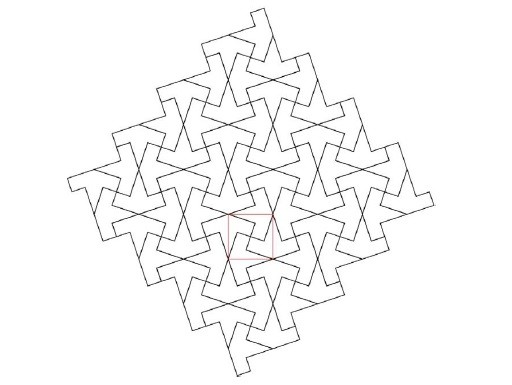
Dibujo y análisis geométrico: Pérez Gómez, R.
Fuente: Pérez Gómez, R. (2019). Alhambra. Belleza abstracta. Patronato de la Alhambra y Generalife, p. 158
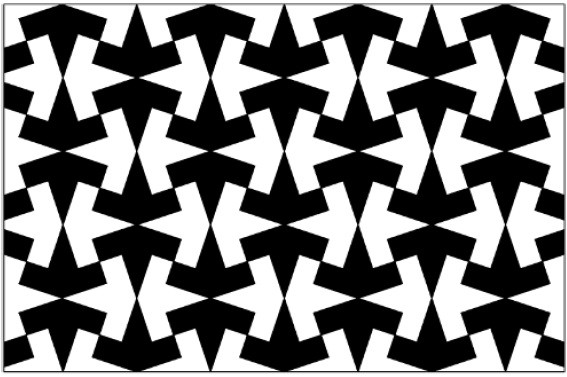
Dibujo: Martínez Aires, M.ª D.
Análisis geométrico: Pérez Gómez, R.
Fuente: Pérez Gómez, R. (2019). Alhambra. Belleza abstracta. Patronato de la Alhambra y Generalife, p. 159
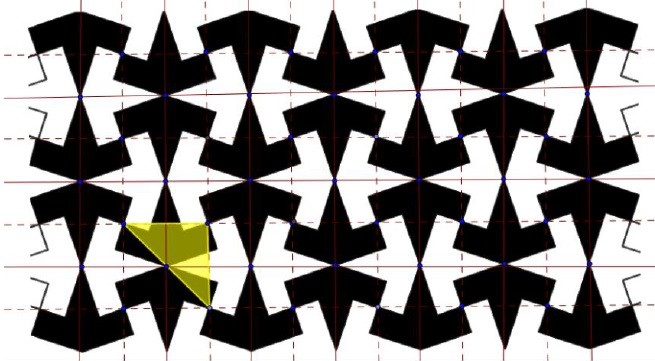
• Tesela básica: triángulo rectángulo isósceles marcado en color amarillo
• Ejes de reflexión: líneas rojas
• Ejes de reflexión en deslizamiento: líneas rojas discontinuas
• Centros de rotación de orden 2 (1800): puntos en color azul
Dibujo: Martínez Aires, M.ª D.
Análisis geométrico: Pérez Gómez, R.
Fuente: Pérez Gómez, R. (2018). La Alhambra. Abstracción y Belleza, Álgebra y Geometría. Patronato de la Alhambra y Generalife. Alhambra Educa, p. 85
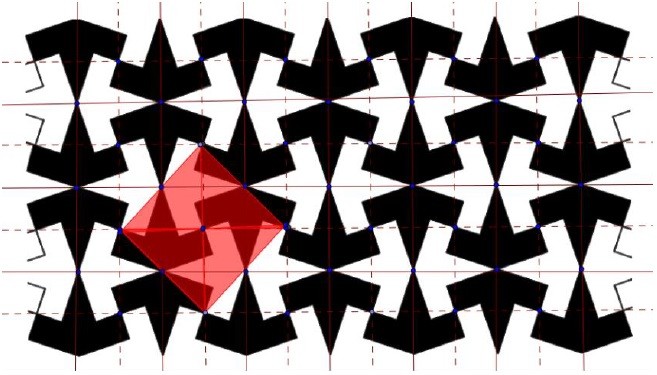
• Región generatriz: cuadrado marcado en color rojo
• Traslaciones básicas: vectores cuyas direcciones vienen dadas por los lados del cuadrado
Dibujo: Martínez Aires, M.ª D.
Análisis geométrico: Pérez Gómez, R.
Pérez Gómez, R. (2018). La Alhambra. Abstracción y Belleza, Álgebra y Geometría. Patronato de la Alhambra y Generalife. Alhambra Educa, p. 85
The Qur?an (2:163) says: “Your god is One God, there is no god but He, the Merciful, the Compassionate”, also, in (42:11), it says: “He is Creator of the heavens and the earth. He has made for you from yourselves, mates, and among the cattle, mates; He multiplies you thereby. There is nothing like unto Him; He is the Hearing, the Seeing” and finally in (24:35): “Allah is the light of the heavens and earth. His light is like a niche within which there is a lamp, the lamp is within glass and the glass is like a radiant star. It is lit from a blessed olive tree, neither of the east nor of the west, whose oil would almost glow even if untouched by fire. Light upon light. Allah guides to His
light whom He wills. Allah presents examples for the people and Allah is knowing of all things.” Stating that “There is nothing like Him” has made the representation of Allah forbidden in Koranic tradition, and instead it resorts to decorating religious buildings, and buildings that are part of the architecture of power, such as the Alhambra. The strategy was to display a concept, the One among the multiplicity, in decorative panels full of colour that required the presence of light, of Allah who “is the Light”, which shines
in these ceramic mirrors like fire without flame. No greater example of creativity can be found when interpreting Nasrid culture and establishing symbols with collective meaning that express it.
Esta rica decoración cerámica alcanza su cenit en la decoración hispanomusulmana en los encintados de alicatados (Foto 2) del Salón del Trono del Palacio de Comares en el alcázar del sultán en la Alhambra. Exhibiendo un colorido exultante, de forma abstracta, evocan paseos por sus cintas, entre sinos y zafates, candiles y almendrillas, alrededor del Trono de Dios, el sino central, por cada uno de los siete cielos; quizá también traigan a la memoria de quienes son creyentes musulmanes en la peregrinación a La Meca (Hajj), cuarto de los cinco pilares islámicos, mostrando los, al menos, preceptivos siete giros rituales alrededor de la Kaaba (Figura 8).
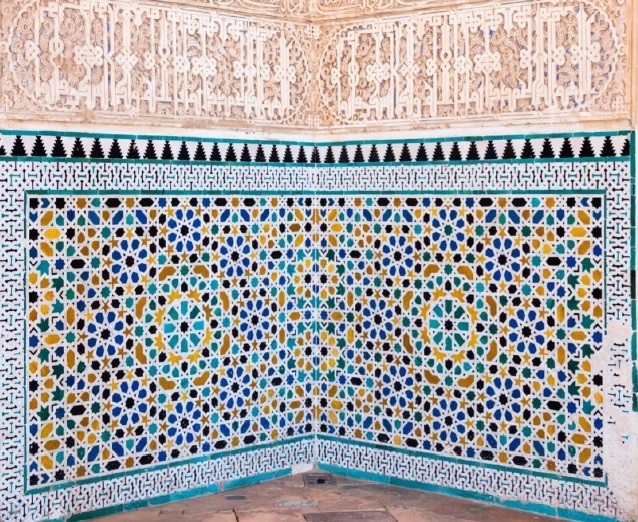
Autoría: Jesús Valenciano de Alarcón
Fuente: Pérez Gómez, R. (2019). Alhambra. Belleza abstracta. Patronato de la Alhambra y Generalife, p. 192
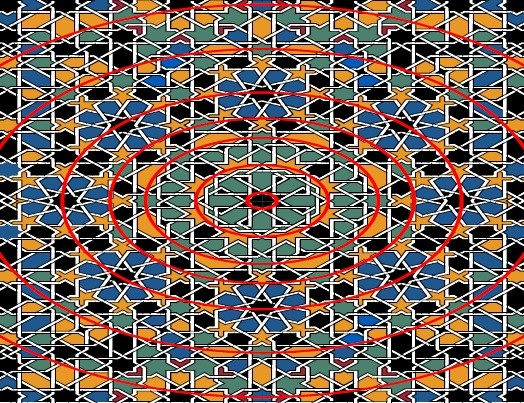
Dibujo: Martínez Aires, M.ª D.
Análisis geométrico: Pérez Gómez, R.
Fuente: Pérez Gómez, R. (2019). Alhambra. Belleza abstracta. Patronato de la Alhambra y Generalife, p. 229
Autor del artículo: Rafael Pérez Gómez. E.T.S. de Arquitectura de la Universidad de Granada.





 Contact
Contact






